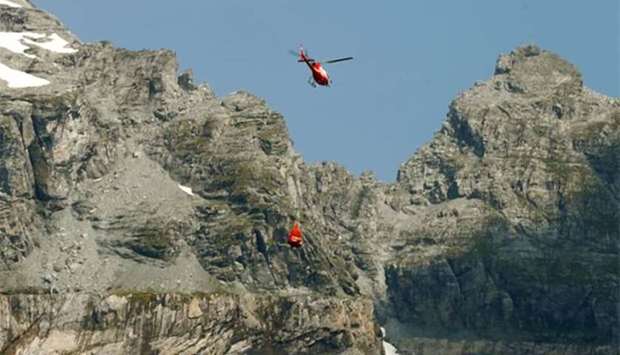Aviation experts on Monday pointed to treacherous mountain winds and low speed as potential factors in the Swiss vintage air plane crash that left 20 dead.
The 79-year-old Ju-52 aircraft had nosedived on the Piz Segnas mountain at a height of 2,540 metres during a scenic tourist flight on Saturday, killing all on board.
"The salvage operations are expected to continue for two more days," a spokeswoman of the federal prosecution authority said.
German accident researcher Jan-Arwed Richter told dpa the flight by tourist air company Ju-Air may have encountered some dangerous clear-air turbulence.
"Even under ideal weather conditions, dangers lurk in the mountains that can have very negative safety consequences for an aeroplane," said Richter, co-founder of the Jet Airliner Crash Data Evaluation Centre in Hamburg.
Richter also pointed out that the high summer temperature reduces air density. In such a situation, planes to need go faster to keep them up in the air and to prevent them from stalling.
"Stalling can happen if the speed is too low, for example in a sharp turn," Swiss civil aviation expert Hansjoerg Egger told the Swiss tabloid Blick.
"In the mountains, the Ju flies low above the ground. There is no time to catch the aircraft" if it stalls, added Egger.
However, he thinks it is unlikely that the German-made Ju-52 had stalled because of the heat.
"Hobby pilots might underestimate that, but definitely not the Ju's experienced crew," he said.
Both experts agreed that vintage planes are safe, because they are kept in top shape.

A helicopter flies to the accident site of a Junkers Ju-52 airplane near the mountain resort of Flims, Switzerland on Sunday.


